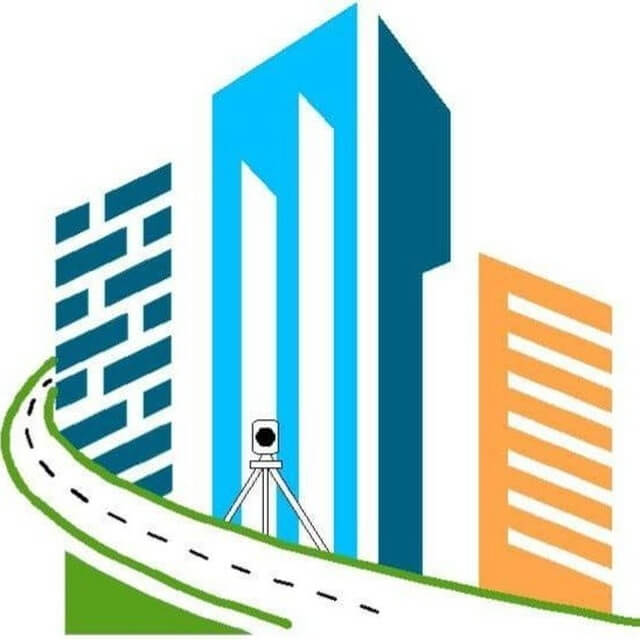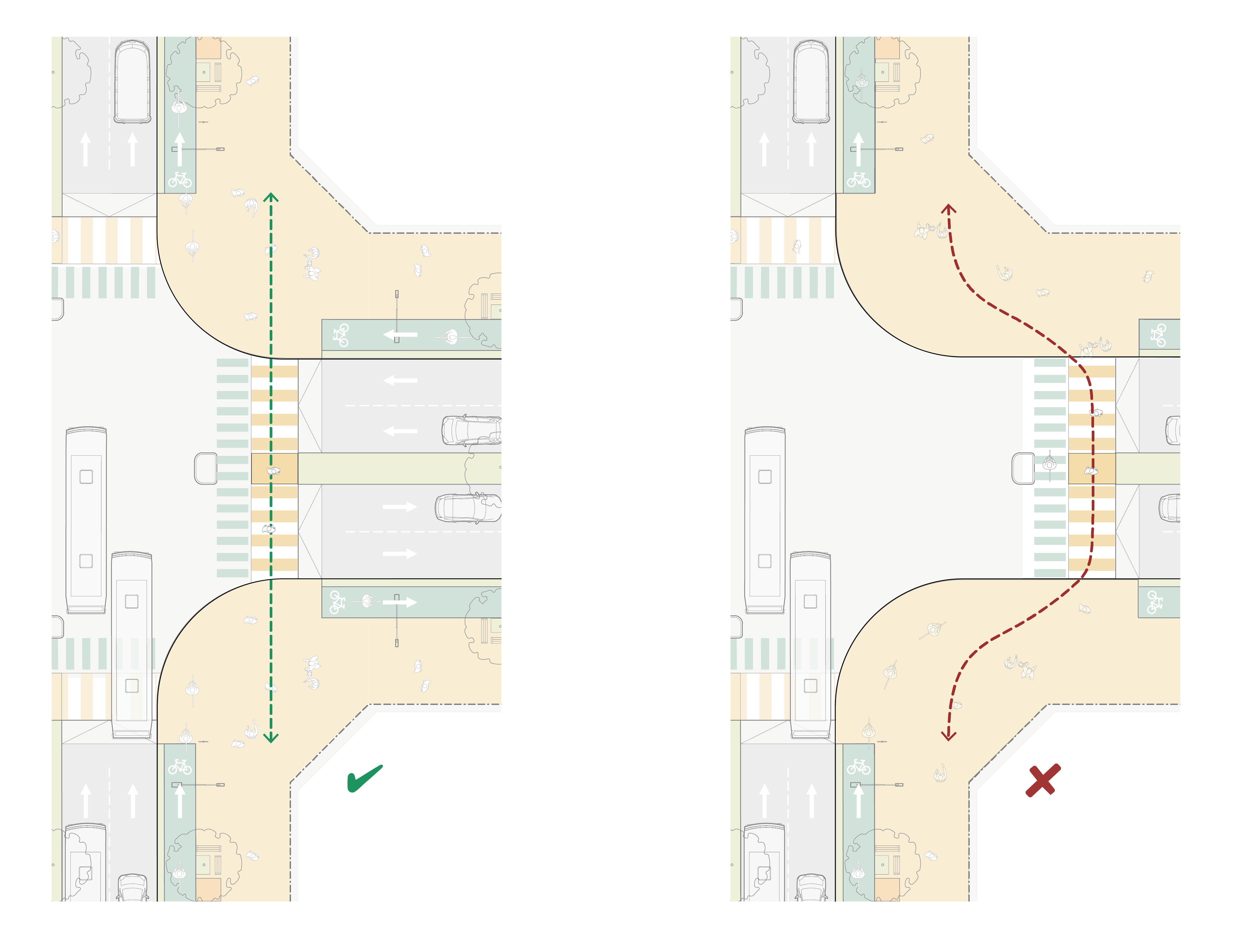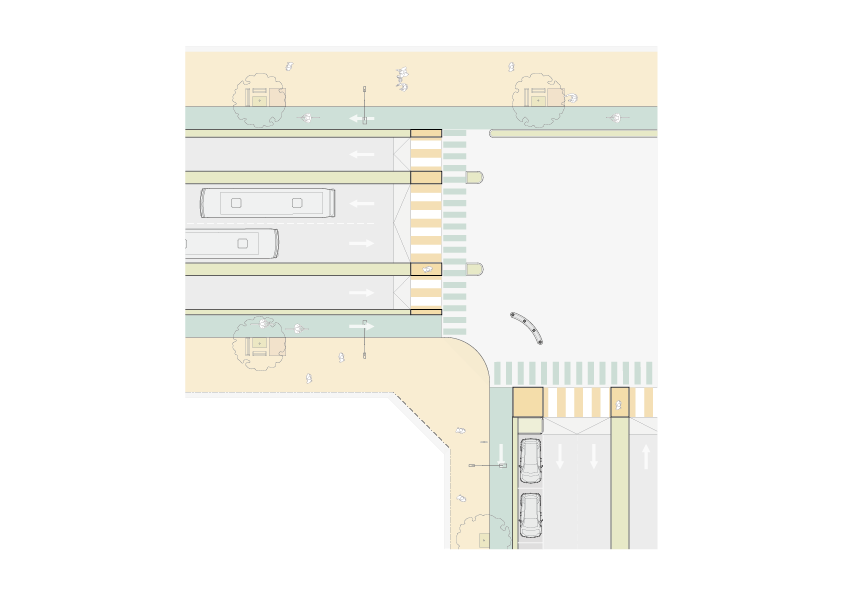Intersections
Intersections are a key part of the urban landscape and, therefore, should be treated properly to maximise attractiveness, safety and efficiency. Intersection design has undergone a fundamental shift over the past decades. What was once seen as simply an exercise in processing the highest number of vehicles has now been recast as an exercise in safety.
Intersections, by definition, are points of conflict. Experience tells us that the best way to minimise the outcomes of those conflicts is through speed management—not by assigning priority as is traditionally done through traffic control devices. The quality of an intersection environment can vary significantly depending on turning radii, the presence of refuge islands, the continuity of cycle tracks, and other design features.
Intersections, rather than the standard section of a street, are the limiting factor in vehicle capacity. Therefore, intersection design needs to take into account the impact of design choices on mobility. However, this emphasis on mobility should not be confused with an emphasis on private motorised traffic. Instead, it may be desirable to design an intersection in such a way that prioritises throughput of public transport, cycles, and pedestrians.



